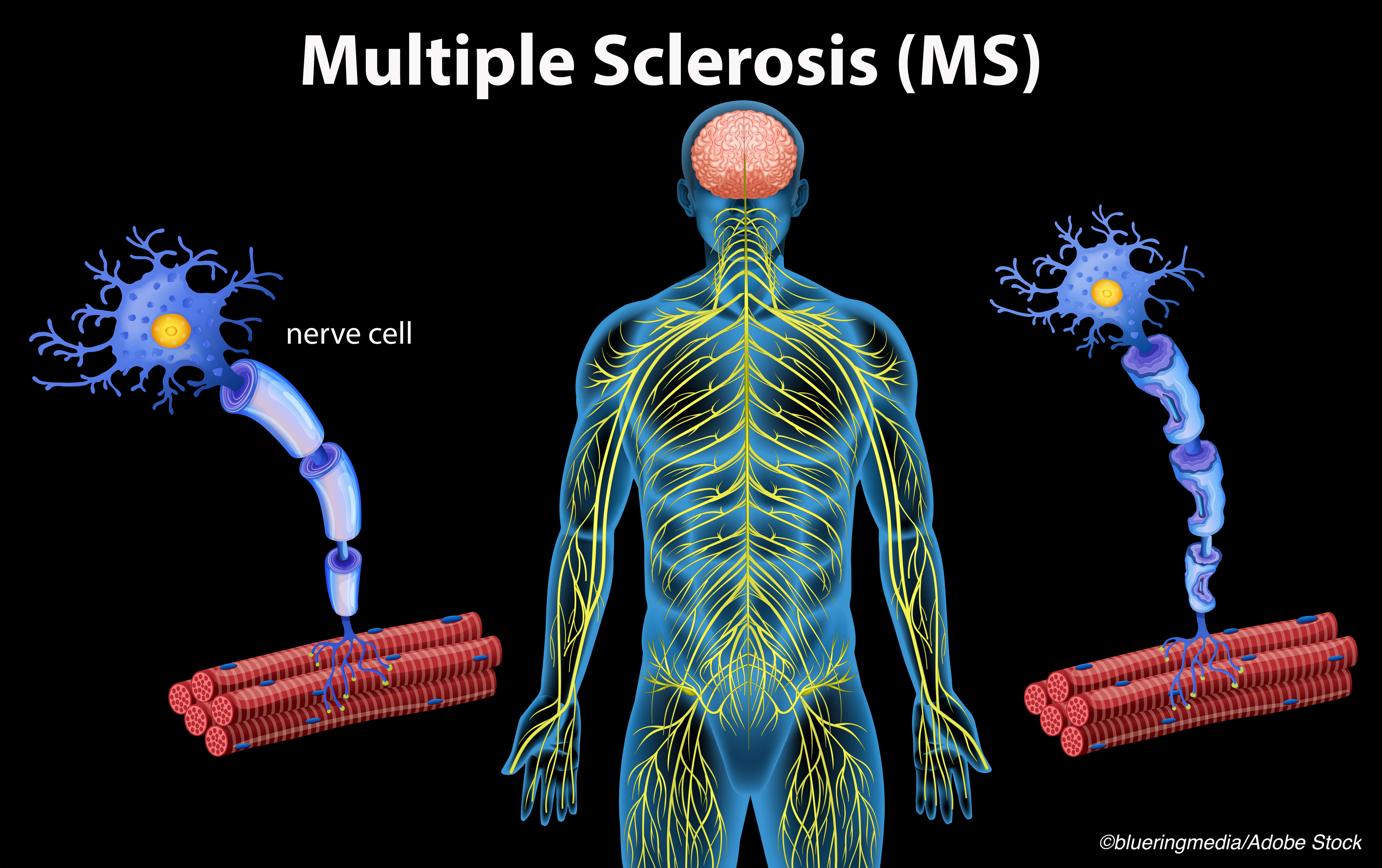In people newly diagnosed with relapsing multiple sclerosis (MS), is it better to start with a high efficacy treatment, or to reserve those drugs for breakthrough disease and choose an agent with moderate efficacy as first-line treatment?
And, if significant breakthrough disease activity occurs, how should clinicians and patients decide whether and when to switch?
“I’m sure all of us who are treating individuals with multiple sclerosis are aware that there’s a great push in the field these days to consider starting with the stronger medications,” said Ellen Mowry, MD, of Johns Hopkins University, at the Presidential Lecture of the 2021 Consortium of Multiple Sclerosis Centers (CMSC) annual meeting. “But I’m really interested in understanding whether the treatment choice a person with MS and I make at the time of their diagnosis matters with respect to how they’re doing several years down the road.”
Two ongoing trials evaluating aggressive versus escalating treatment strategies should help inform the decision process, Mowry said.
TREAT-MS is a pragmatic trial of relapsing remitting MS patients with planned follow-up up to 72 months. It will evaluate whether an early aggressive strategy influences the intermediate-term risk of disability and whether low-risk patients who start on moderately effective agents, but experience breakthrough disease, have a different risk of disability accumulation depending on which drug is used as a second treatment.
The primary endpoint of the study is disability progression. Moderately effective agents in TREAT-MS include glatiramer acetate, interferons, teriflunomide, fumarates, and sphingosine-1 phosphate modulators; aggressive, high-efficacy agents include alemtuzumab, ocrelizumab, rituximab, natalizumab, cladribine, and ofatumumab.
A companion study, DELIVER-MS, will compare brain volume change for the two treatment strategies.
In her lecture, Mowry outlined significant knowledge gaps the studies may help fill, including thresholds for switching therapies to minimize disability, whether disability benefit broadly favors any patient with MS or subgroup, and safety implications.
Even as they provide essential information, current observational and clinical trial data have significant limitations, she said.
Mowry cited observational research that showed declining rates of MS disability over time, which may be due to modern diagnostic criteria or new disease-modifying therapies. An analysis of nine-year disease progression outcomes for fingolimod, alemtuzumab, or natalizumab compared with interferons or glatiramer acetate suggested a class difference for disability outcomes, she noted.
Another study compared policy-level differences in treatment strategies in Denmark (where fewer patients start on high-efficacy drugs) versus Sweden (where more patients start with high-efficacy treatment) and found 24-week disability benefit favoring Sweden. “Still, in Sweden, only 30% to 35% of the people really started highly effective disease-modifying therapy right out of the gate,” Mowry said. “So, it’s not clear that represents a true threshold.”
“I think it’s really important to remember that observational studies at this time aren’t really able to fully account for treatment choice and other potential confounding, and in particular, confounding by indication for these treatments remains a concern,” Mowry observed.
Clinical trial data has also offered additional insights and cautions, she noted. For example, a review of clinical trials for disability freedom across treatment classes found the medication with the strongest impact on six-month disability was interferon 1b—”not a great indication that treatment class is associated with disability progression in clinical trials,” Mowry commented.
Other issues with clinical trial evidence included timing (earlier research more likely studied patients with more active or severe MS diagnosed later in its course), short duration studies that often focused on relapse rates or very short-term disability, and safety differences in real world populations “since trial populations are usually healthier,” Mowry said.
Perhaps more fundamentally, existing clinical trials “aren’t really assessing treatment strategies,” she pointed out. “In trials, participants aren’t offered alternatives if they’re not doing well.”
Safety is a common concern of newly diagnosed patients, Mowry noted. In TREAT-MS and DECLINE-MS, for example, “up to 50% of people who decline randomization do so because they choose the escalation approach. They are not eager to start a higher efficacy therapy.”
So, how to decide on the best treatment plan to start? Mowry said she discusses treatment decisions with newly diagnosed patients over two or three appointments scheduled in close succession.
With each patient, she describes escalation and early intense therapy strategies broadly, being honest about the lack of individualized information for long-term outcomes. As they narrow the potential treatment list, she and the patient discuss the pros and cons of each remaining option.
If the patient opts for an escalation approach, she escalates treatment if there is breakthrough disease—relapse or more than one new lesion—after therapy should have kicked in.
In her early career, there were far fewer MS treatment options, Mowry noted. “We’re fortunate to be in an era where multiple disease modifying therapies are available,” she said. “We hope TREAT-MS and DELIVER-MS will deliver data so we understand how these strategies can be used in the real world to help those newly diagnosed with multiple sclerosis.”
-
Whether to start newly diagnosed multiple sclerosis patients on a high efficacy treatment or choose an agent with moderate efficacy first is an unanswered question.
-
Two trials evaluating treatment strategies, TREAT-MS and DELIVER-MS, are underway to address this question.
Paul Smyth, MD, Contributing Writer, BreakingMED™
Mowry disclosed grant or research support from Biogen, Teva, and Genentech, and honoraria from UpToDate (editorial royalties).
Cat ID: 130
Topic ID: 82,130,730,130,36,764,192,925,763



